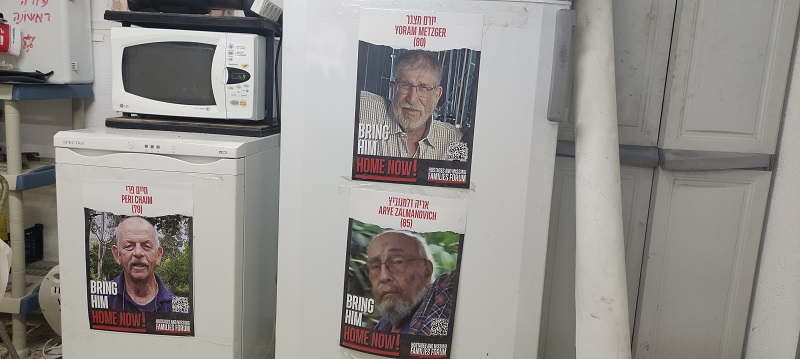
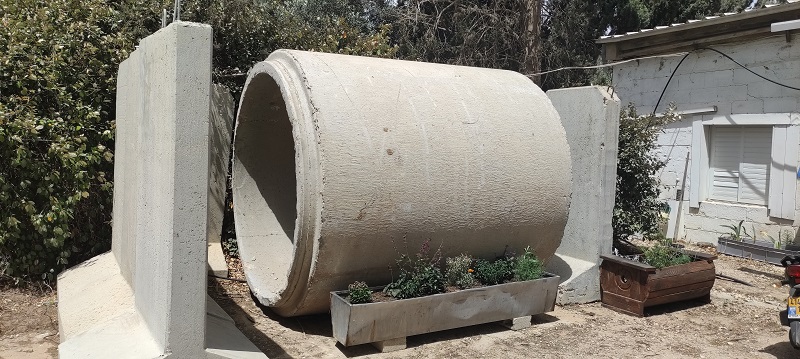
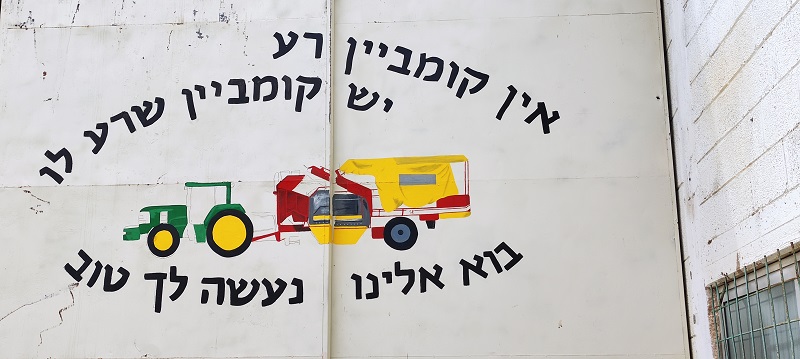
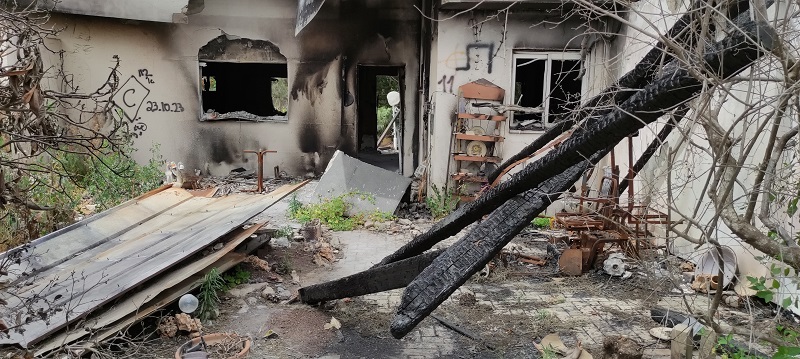

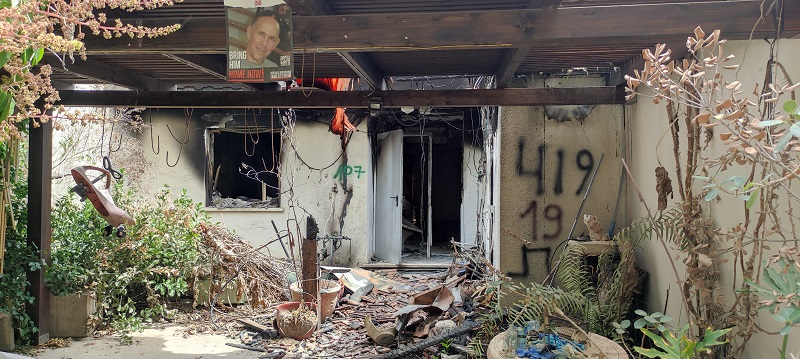
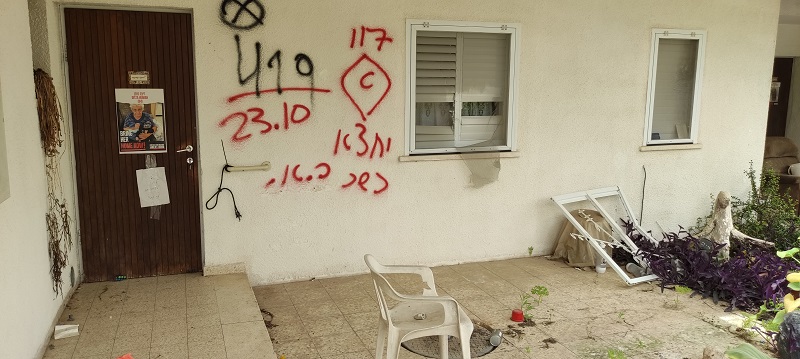
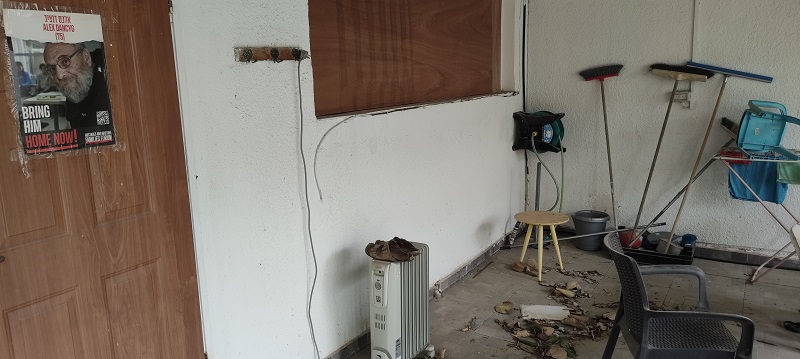

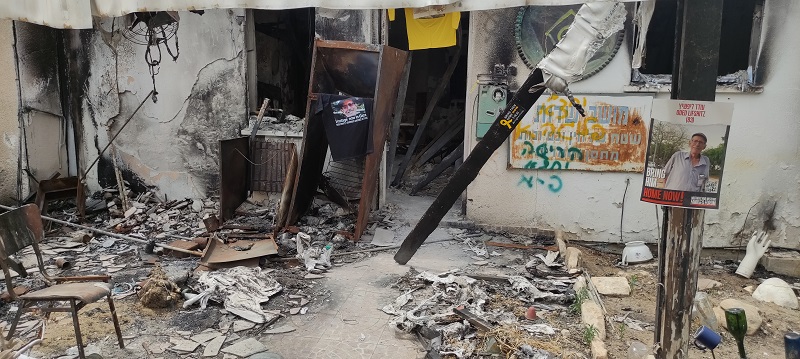

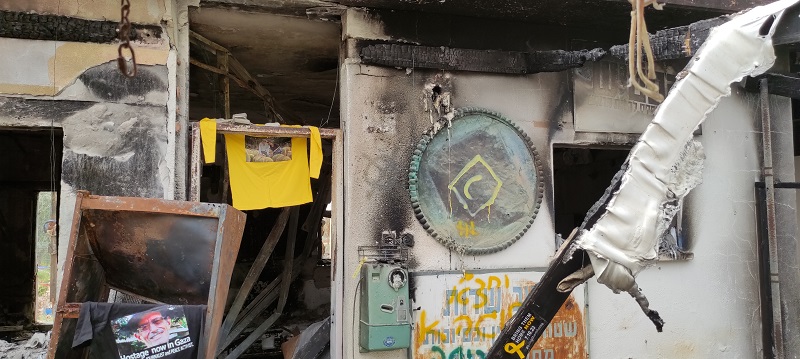
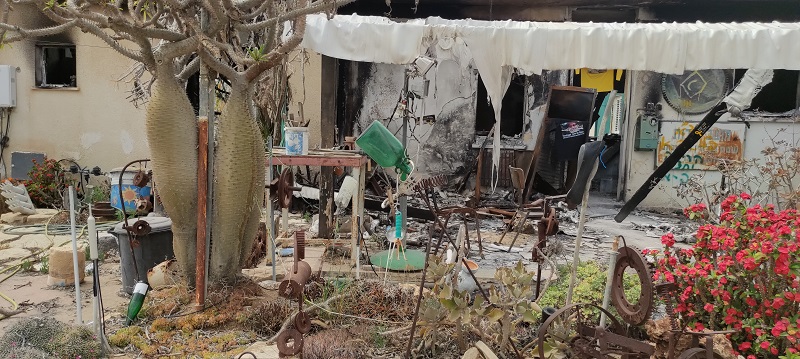
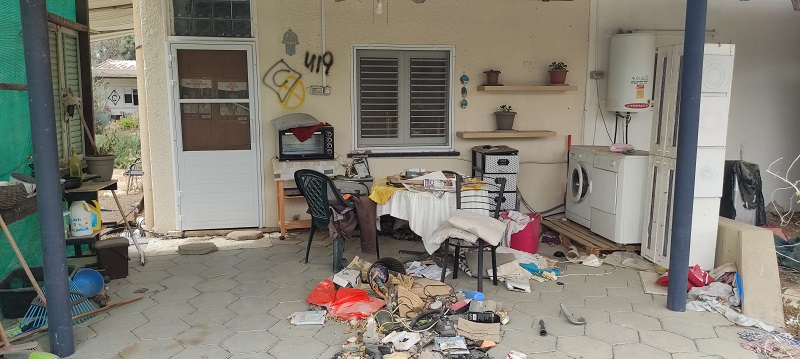
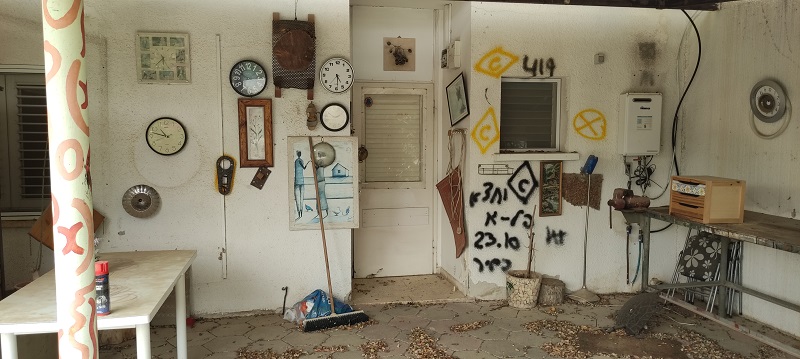
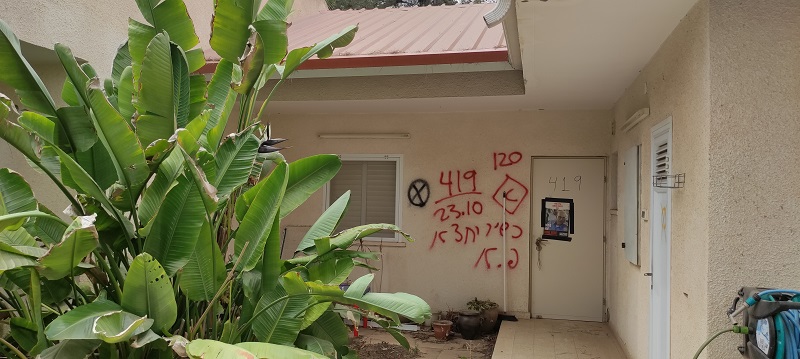
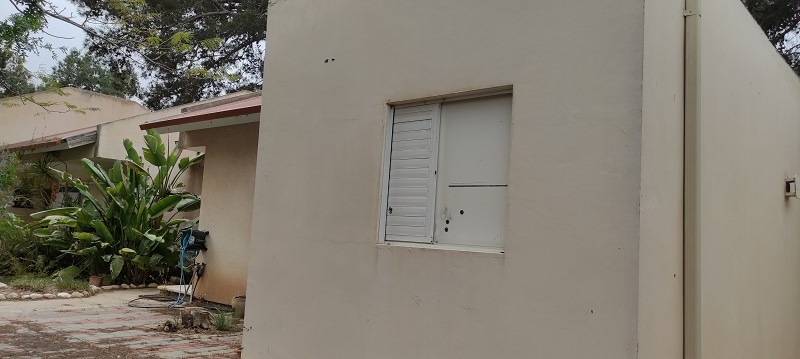

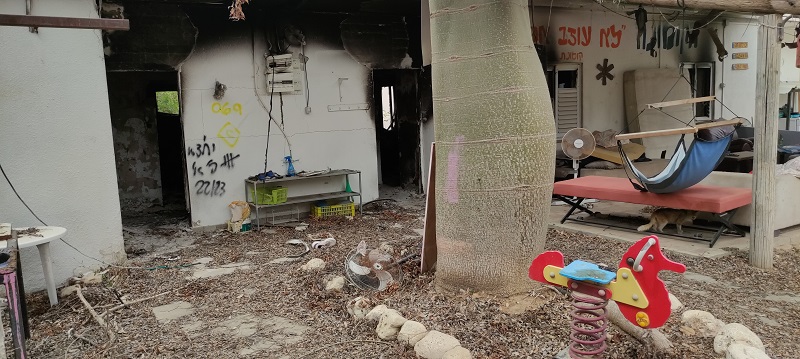
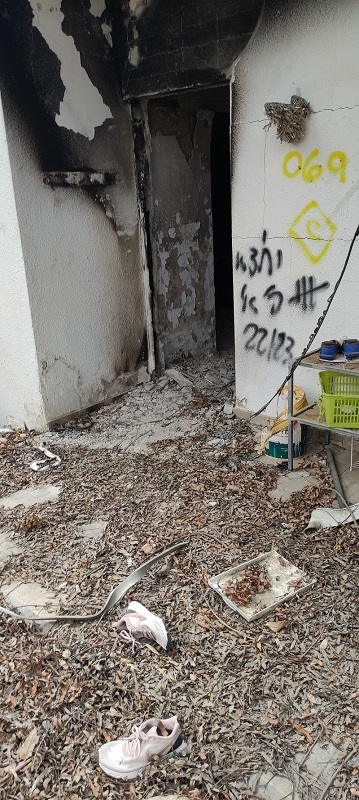
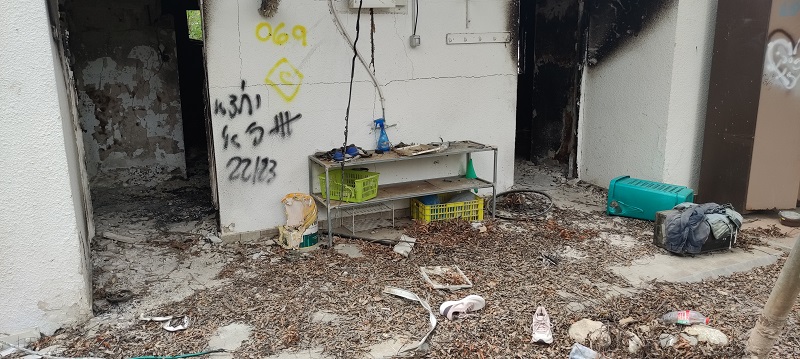
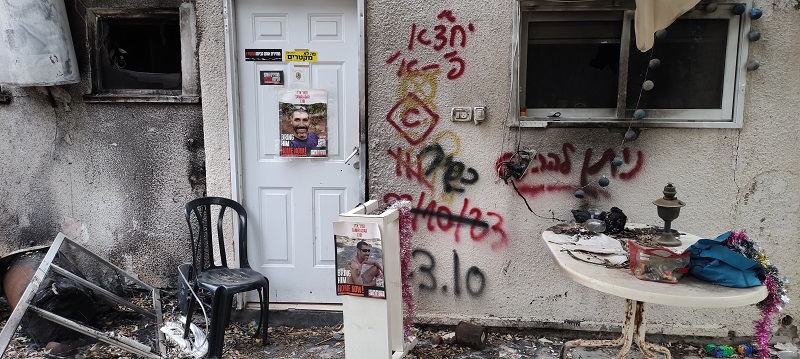
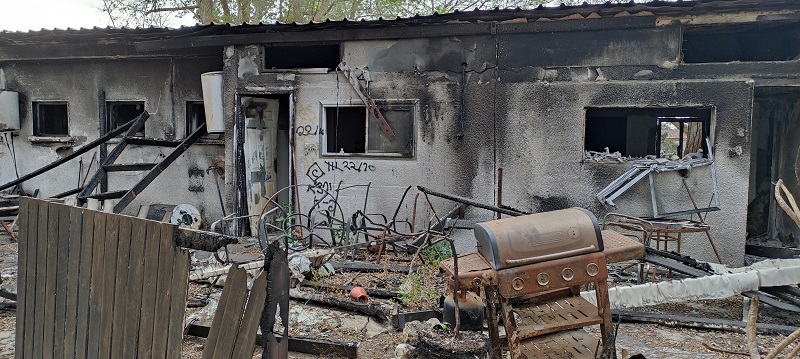
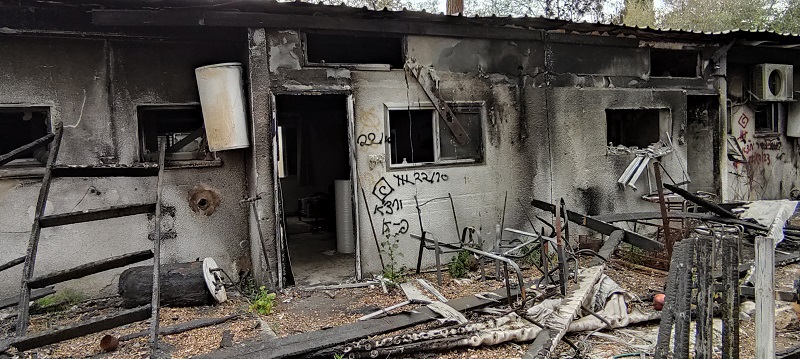
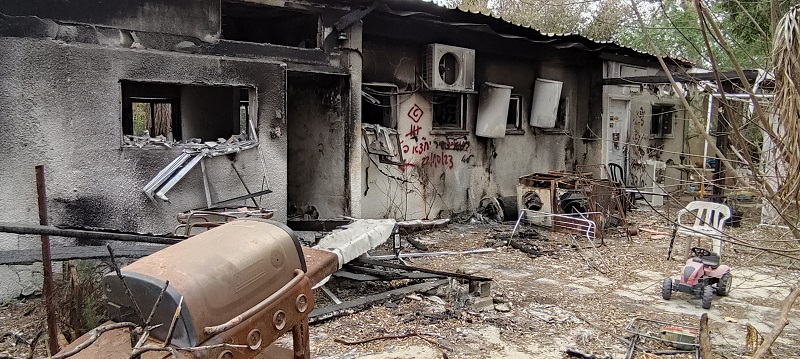
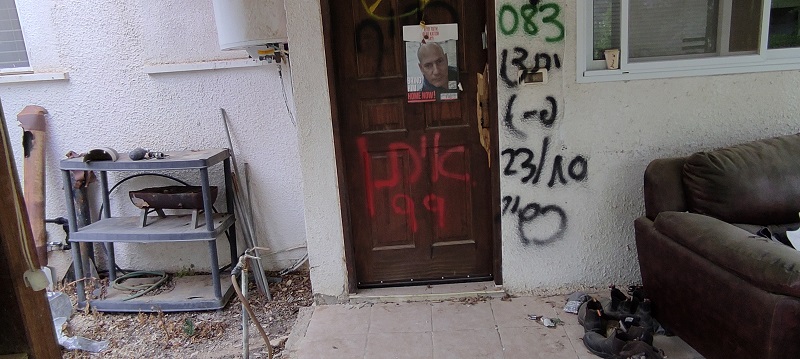

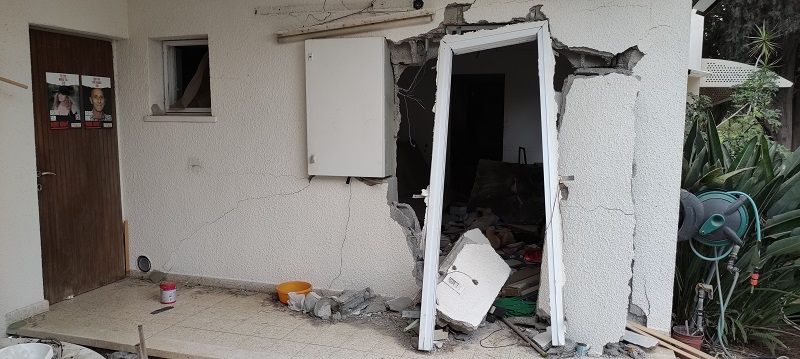

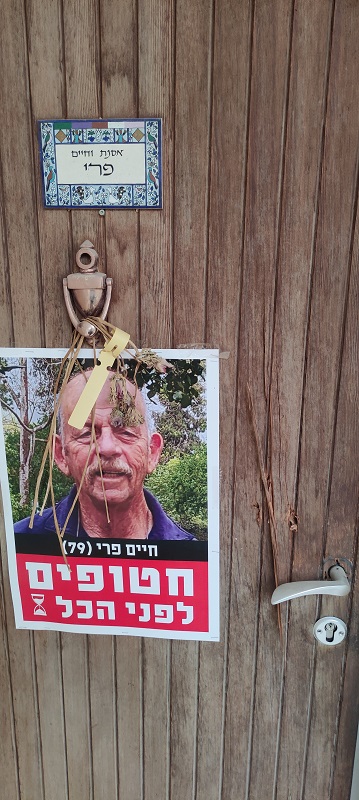
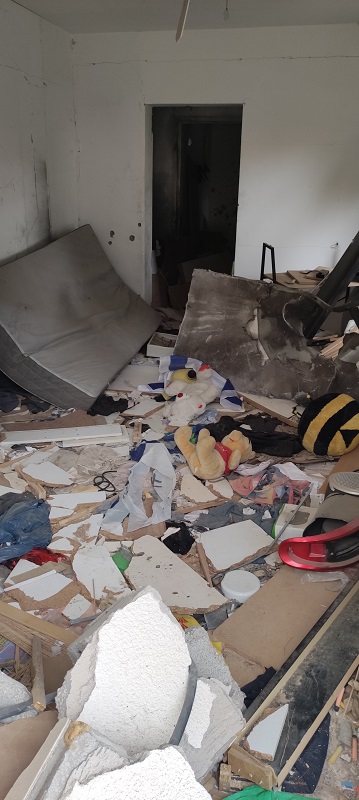
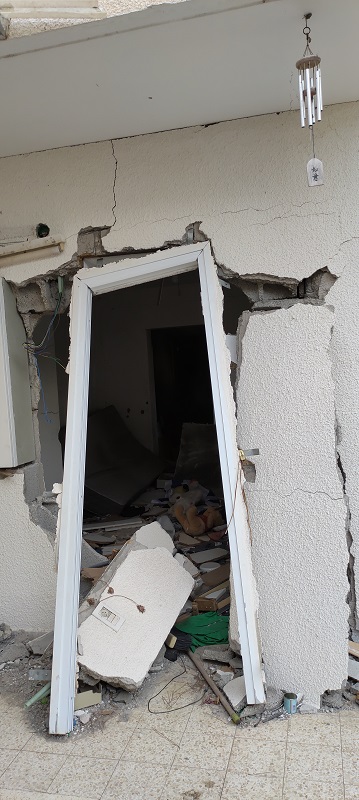
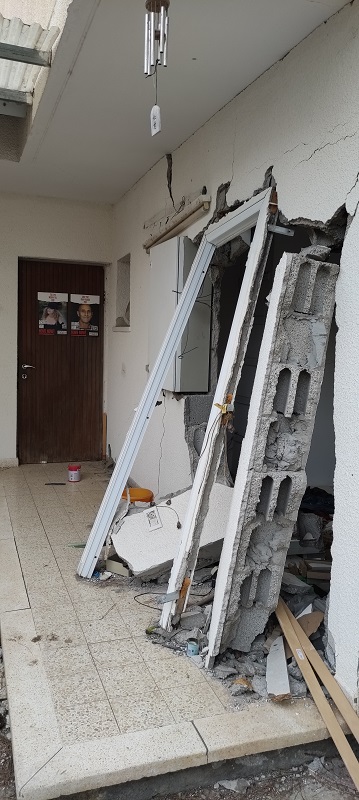
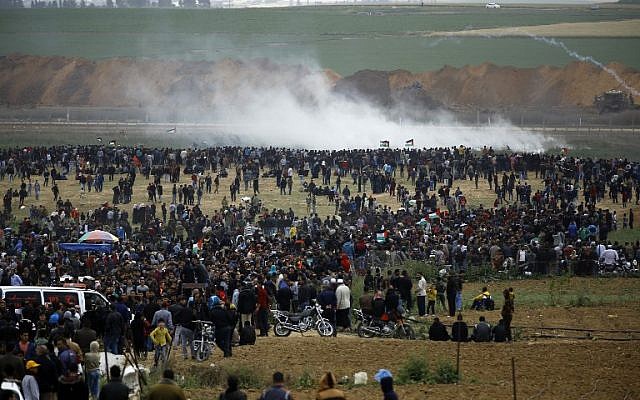
MARCH 30, 2018 : 15 KILLED, DOZENS WOUNDED… THE GAZA VOLCANO IS ERUPTING….
MAY 14, 2018 : 60 KILLED, over ONE THOUSAND THREE HUNDRED WOUNDED…
Matan Tzuri, YNet News, June 19, 2019
Israel to build new sewage pipeline to divert waste from Gaza [to prevent contamination]
Sandy Tolan, Al Jazeera, October 29, 2018
Gaza’s drinking water spurs blue baby syndrome, serious illnesses
Sandy Tolan, Al Jazeera, October 30, 2018
How can Gaza’s contaminated water catastrophe be solved?
Herb Keinon, The Jerusalem Post, August 17, 2018
ANALYSIS: SYRIA IN GAZA, WITHOUT THE RUSSIANS
Lisa Rozovsky, Haaretz, June 2018
For Young Palestinians, There’s Only One Way Out of Gaza
“In Gaza you have to think a certain way, live in a certain way. Your friends, the language, the culture – it’s all very rigid. You can’t change it.”
Michael Bachner, The Times of Israel, June 20, 2018
In rare move, Egypt said to keep Gaza crossing open for 2 more months
Alia Chughtai, Al Jazeera, May 16, 2018
Palestinians’ Great March of Return: The human cost
Ayelett Shani, Haaretz, November 11, 2017
Gaza Kids Live in Hell: A Psychologist Tells of Rampant Sexual Abuse, Drugs and Despair
GAZA DATA SHEET
There are one million children under the age of 15 in the Gaza Strip.
200,000 boys between the age of 15 and 24.
The median age in Gaza is 17.
In Israel the median age is 30. [38 in the US, 41 in France, 47 in Germany]
In Gaza, the Youth Dependency Ratio is over 70%. In Israel it is close to 46%.
[In the US and France: 29%; 20% in Germany]
The Literacy Rate in Gaza is high: 97%.
So is Unemployment for the young and for women: 66%. [1,2]
As for Water from the tap, 97% is polluted, unfit.
So is sea water: people can’t bathe, as it is contaminated, hazardous to health.
100,000 cubic meters of untreated sewage are rejected into the sea every day.
Electricity is on 3 to 4 hours daily, at random times night and day.
There are 59 km of fences between Gaza and Israel.
There are 13 km of fences between Gaza and Egypt.
In January 2008, activists broke through the heavy metal fences. Half the population (800,000 at the time) rushed to Egypt, and were driven back after a few days. Check Gaza Border Breach.
What Israelis fear is another Border Breach of such magnitude, this time into Israel. [3]
Since the beginning of 2018, the number of trucks entering Gaza through Kerem Shalom has fallen from 1000 a day (2015-2016) to less than 350, as there is no trade flourishing in Gaza : people just can’t buy anymore.
80% of Gazans live in poverty, 65% under the poverty line.
45% of the people are unemployed (as opposed to 20% in the West Bank and 4.3% in Israel)
“Gaza cannot and must not be allowed to remain a prison camp,” ex British PM Cameron declared, in July 2010, adding: “People in Gaza are living under constant attacks and pressure in an open-air prison”.
[2] Female unemployment in Gaza skyrockets, 66% without jobs 2018/3/7 https://www.ynetnews.com/articles/0,7340,L-5148754,00.html
[3] 2018/4/25 “The main goal […] remains to break through the fence, allowing hundreds and thousands of civilians to run into Israeli territory” https://www.ynetnews.com/articles/0,7340,L-5239265,00.html
*****************************************************************************************************************************************************************
Iyad Abuheweila & Isabel Kershner, The New York Times, June 2, 2018
A Woman Dedicated to Saving Lives Loses Hers in Gaza Violence
“…this is the first time I see the despair everywhere, in every corner…There is no joie de vivre, no joy during Ramadan. People have no incomes, no food, no medicine. The sense is that the world has forgotten about the Gaza Strip and its people. Life and death are the same side of the coin for a lot of people. I hear people say that explicitly…
…We as residents feel we’re actually hostages to a system of interests and power plays, and where they will lead, nobody can say.” Jack Khoury, Haaretz, May 30,2018
Ahmad Abu Amer, Al Monitor, April 29, 2018
Economic disobedience looms in Gaza
Extracts “Economic disobedience looms in Gaza” :
GAZA CITY, Gaza Strip — Private sector institutions in the Gaza Strip threatened April 23 to start acts of economic disobedience by closing commercial crossings and refusing to pay taxes to the Palestinian government authorities. The private sector institutions hope to put pressure on Israel to lift the blockade on Gaza in addition to pressuring the Palestinian Authority (PA) to cancel the sanctions imposed on the coastal enclave since April 2017, which culminated this month with the suspension of the salaries of public workers.
In a statement that Al-Monitor secured a copy of, the institutions said, “The Gaza Strip is on the verge of complete collapse in all its vital sectors. There is no longer any room for silence. Gaza is dying. The situation is crumbling down economically, socially and at the health level. (…) We requested an urgent meeting with President Mahmoud Abbas, but we have yet to receive a response.”
The statement continued that they have carried out several protests over the past months in a bid to convey messages to all parties, starting with Israel, the neighboring countries and the international communities as well as to the PA and Hamas. Their activities and calls fell on deaf ears.
The protest movements in Gaza started on Jan. 22 with a national strike (…)
Alaa al-Din al-Araj, the head of the Palestinian Contractors Union in Gaza (…) noted that the authorities are well-aware of the consequences of such a threat, mainly a complete economic shutdown. Araj also stressed that the goal is to put an end to the blockade and the sanctions that have affected every household in Gaza.
A Palestinian Central Bureau of Statistics report published April 14 shows that the poverty rate in the coastal strip has reached 53%.
Khalil Rizk, the head of the Federation of Palestinian Chambers of Commerce, Industry and Agriculture, told Al-Monitor that the federation has been in contact with the PA in an attempt to stop the punitive measures.
On April 24, 100 nongovernmental organizations (NGOs) in the Gaza Strip called on Abbas to disburse the salaries of public servants in Gaza and called on Israel to lift its siege on the Gaza Strip in order to stop what they deemed as “the rapid economic collapse plaguing the Gaza Strip.”
(…) the number of trucks entering the Gaza Strip through the Kerem Shalom crossing has fallen to less than 350 trucks per day compared to 800-1,000 trucks per day in 2015 and 2016.
(…) the PA provides $100 million in total to the Gaza Strip per month, $70 million of which is earmarked for the salaries of government employees. The absence of these funds this month paralyzed the financial cycle in Gaza’s markets and banks. He called on private sector institutions in the West Bank to support their counterparts in Gaza by taking steps to pressure the Palestinian officials to back down from the punitive measures against the Gaza Strip.
Muhammad Shehada, Haaretz, April 9, 2018
Marching in Gaza, my brother risks death – to feel free
Extracts “My brother in Gaza” :
My asthmatic younger brother, Salah 18, is scheduled for an urgent eye operation in Egypt, without which he might permanently lose the sight in his right eye. He’s also been awarded a scholarship to study in Algeria, and has been fighting to get out of the Gaza Strip to take up his place for nearly two years, without success.
His life is being entirely stolen from him by Israel’s blockade, yet his future stares back at him just a footstep away, from behind the giant concrete walls that seal Gaza. He’s in a race against time not to lose his sight, his mind, and his life as well.
Almost every day, my brother shows up for the Gaza “Great Return March,” although my mother has desperately tried almost everything to stop him from running bare-chested towards his death.
The border protests are the only place where it feels that he’s at least doing something about his own slow death, even if only to scream at the top of his lungs, telling the world “We are here!”
It’s the only place where he and all of my friends in Gaza can catch a breath of freedom, despite the stinging tear gas, even if it’s just for a moment.
…/…
Hamas has deployed its security and intelligence personnel to maintain what it sees as the three critical parameters of the protest: independence, non-violence, and no breach of the fence into Israel. The security forces are assigned to prevent individual attempts to disrupt the protest’s non-violence, such as young people trying to throw molotov cocktails towards Israel. Some cases slip their attention; others are dealt with firmly.
Last Friday, my brother accidentally walked into a tent where the wounded were being attended to. He and his friends were dragged into interrogations by Palestinian internal security personnel for taking photos of the tent and for holding spontaneous interviews with the wounded.
Hamas, despite remaining dismissive of the protest’s ability to challenge Israel’s blockade, has, like all political parties would have done, jumped with alacrity into the protests to accrue political capital, recognizing the backdrop as an opportune moment for photoshoots, for fueling popular support and to advance its vested interests.
When Israel responds to the protests with violence, Hamas cheers those dramatic photographs’ ability to return Gaza to world headlines, and to concentrate the people’s anger on Israel and its “complicit partner,” the Palestinian Authority.
…/…
Hamas hopes the protest will go some way to counter the pressure that’s been ramping up since the assassination attempt on Palestinian Prime Minister Rami Hamdallah. The Palestinian Authority initially blamed Hamas for the explosion which targeted Hamdallah’s convoy as he was visiting Gaza. Palestinian President Mahmoud Abbas then threatened to impose even more severe sanctions on Gaza than those that already make the enclave unlivable.
Hamas hopes the protests will convince Abbas to give the reconciliation a second chance and avoid being blamed by Israel for pouring more fuel into Gaza’s imminent explosion.
Hamas is also calculating that both Israel and Egypt are watching how swiftly and easily it’s mobilized the masses. That’s in order that Israel might put pressure on Egypt to ease its part of the blockade to assuage popular tension and anger.
It would be a mistake for onlookers to assume that Hamas’ hijacking of the protest undermines its authenticity and the genuine pain of Gazans.
Yes, the protests are being pushed hard, by blanket promotions in street talks, schools, mosques, universities, shops and on taxies, the pictures of Ismail Haniya playing football close to the border, Yahya Sinwar’s inflammatory speeches, and Hamas paying $3000 to the families of the dead (despite the organization itself receiving the tenfold that amount).
But Hamas cannot drag young people out of bed at gunpoint and shuttle them to the borders to dance to its tune. Young Gazans are making their way there by their own free will.
Was it not for the misery inflicted by Gaza’s status quo, no one would show up for that date with death. Although some have joined out of mere curiosity, to see an area they never dared to step foot in before, and others joined out of national pride, or to simply take photos, many of the people present felt they had to participate in the march to challenge their sense of their own slow and painful deaths.
Every protestor has a heartbreaking story and a profound reason to stand in front of immediate danger, unarmed. Gazans have been living on the edge of death, starvation and collapse for 11 years, pushing the boundaries for human survival. These grievances can never be faked, and they must be addressed.
Despite the evident danger, my brother, like most people I know in Gaza, is going to keep showing up at the protests every day, until he perishes – or breaks free.
Open Gaza to weaken Hamas. Lift the blockade, properly fund UNRWA, rehabilitate Gaza’s infrastructure – these are the only ways we can prevent the desperation of protestors willing to lose their lives
 A Palestinian man sells drinking water in Khan Younis refugee camp, southern Gaza Strip, April 16, 2016AP / Khalil Hamra
A Palestinian man sells drinking water in Khan Younis refugee camp, southern Gaza Strip, April 16, 2016AP / Khalil Hamra
Over the past six weeks, nearly 100 men, women, and children have been killed in the protests along Gaza’s border with Israel. Over 11,000 more have been injured. One thing is absolutely certain about the latest crisis in Gaza – the status quo is failing.
As a sitting Congressman and a physician, our work has collectively taken us to Gaza more than five times. We’ve seen firsthand the devastation and poverty that the siege on Gaza has wrought.
The humanitarian situation is extremely grave. Only those who have little to lose would willingly approach the border with Israel, knowing they are likely to be injured or killed.
At the same time, the situation is complex and there is much blame to share. All of the major players have made decisions and taken steps to enhance their own interests while most of the almost two million Palestinians who live in Gaza are powerless victims caught in the middle.
It is important to remember that Israel has real security interests at stake in Gaza. Hamas has an arsenal of rockets and missiles, as well as sophisticated tunnels that threaten Israeli civilians. Likewise, we must remember that Hamas is exploiting the desperation of their own people in an attempt to inject violence into the border demonstrations.
But that does not justify using live fire against unarmed protesters or blockading the entire population for years on end.
Any serious attempt at peace between Israel and Palestine must start with fully funding the United Nations Relief and Works Agency (UNRWA), the agency that provides humanitarian assistance, food, health care, education and emergency assistance to Palestine refugees in Jordan, Lebanon, Syria and the Palestinian territories.
Because President Trump has frozen U.S. payments to UNRWA, UNRWA can’t guarantee it will be able to provide schooling to the more than 272,000 children in Gaza when the next school year begins in August. UNRWA also can’t guarantee that it can continue to run its health centers in Gaza, which serve more than 1.3 million refugees. In addition, emergency interventions, like food assistance, are also at risk of being suspended or dramatically scaled down
Even Israeli security officials advocate for UNRWA funding because they see it as important to Israel’s security and well-being. UNRWA provides the basic stability needed for a peace deal to be negotiated.
But the latest crisis in Gaza cannot be resolved just by funding UNRWA. There are also the energy and water crises that must be dealt with. Gazans survive on as little as four hours of electricity per day, which disrupts basic services such as water and sanitation services. Due to the lack of energy, Gaza’s facilities that could help reduce the sewage aren’t running near capacity. More than 100 million liters, the equivalent of 40 Olympic-size swimming pools, of raw sewage enters the Mediterranean Sea daily and contaminates both Gaza’s beaches and Israel’s coastal cities.
In addition, nearly two-thirds of Gazans have no running water and up to 97 percent of the running water in Gaza is too polluted to drink. This humanitarian crisis could easily devolve into a serious public health crisis, like a cholera epidemic, that political borders cannot contain. Israel and the Palestinian authority must work together to ensure sufficient energy and water flows to Gaza.
We believe that the status quo is unsustainable – the blockade on Gaza, which Israel and Egypt have maintained for nearly 12 years, needs to change. The blockade has devastated Gaza’s economy and private sector: unemployment is 43.6 percent. Gaza’s youth are particularly devastated, with around 65 percent unemployed and few opportunities to build careers. The supply of food and consumer goods allowed to enter Gaza following inspection should be significantly increased to meet the population’s most basic needs.
Real change can only be created by opening Gaza to the outside world, which must be done carefully with the full participation of the Palestinian, Egyptian, and Israeli authorities. Crossing points must be secured and the tunnels should be destroyed. The possibility of constructing a port for Gaza should also be explored. These actions would weaken Hamas’s ability to strike at Israel and diminish Hamas’ resources, while also mitigating some of the desperation among the residents of Gaza.
The way things are now, additional tragic loss of life is almost guaranteed. The international community must take action.
Rep. Keith Ellison represents Minnesota’s Fifth District in the U.S. House of Representatives
Carol Hutner Winograd, M.D. is a member of J Street’s Executive Committee and Board of Directors
Brigadier-General Shmuel Tzuker, YNet News, May 27, 2018
A plan neglecting Gaza is no plan at all
Elior Levy, YNet News, April 6, 2018
The Gazan activist, Ahmed Abu Artima, whose post sparked the March of Return
Oliver Holmes & Hazem Balousha, The Guardian, April 6, 2018
Time for peaceful resistance, says Gaza’s new movement
General Eiland interview, David Horovitz, The Times of Israel, April 2, 2018
 “I don’t know what IDF could do if 300,000 try to trample Gaza fence”
“I don’t know what IDF could do if 300,000 try to trample Gaza fence”
Leah Solomon, The Times of Israel, April 1, 2018 
If you were Gazan, what would you do?
Chemi Shalev, Haaretz, March 31, 2018
Analysis : Gaza Carnage Is a Victory for Hamas – and a Propaganda Nightmare for Israel
Anshel Pfeffer, Haaretz, March 31, 2018
Analysis : With Riots and Live Fire, Gaza Just Went 25 Years Back in Time
Avi Issacharoff, The Times of Israel, March 31, 2018
Hamas ‘success’ on Friday presages more protests, more deaths, in more places
Gisha, March 27, 2018
Disruptions at Gaza’s crossings
Gisha, March 14, 2018
Matan Tzuri, YNet News, March 7, 2018 
Gaza perimeter agriculture in peril due to water reservoir contamination
Gisha, February 14, 2018
“Open a commercial crossing in the north of the Gaza Strip immediately”
Amira Hass, Haaretz, February 12, 2018
Opinion : Lieberman Is Right, There’s No Crisis in Gaza – This Is Disaster Extracts :
“When senior officials of the Palestinian Authority, particularly Mahmoud Abbas, speak about the “State of Palestine,” which has been recognized by the United Nations, it includes the Gaza Strip. Gaza is needed for their political narrative, but in practice those officials show indifference to the fate of Gaza’s citizens.
A shortage of 40 percent of the medicines in Gaza’s public health system is not a divine decree. Hamas and Gaza’s residents are right to accuse the Palestinian Authority of deliberately delaying shipments of medicine to pressure Hamas. This is not politically wise, either. Gazans openly criticize the Palestinian Authority, not Hamas.
The delay of shipments of medicine is not economically wise. Instead of patients being treated in the Gaza Strip, they are belatedly referred for treatment outside. The Palestinian Authority pays, and the cost comes to dozens of times the price of the medicines. What folly!
Instead of competing over who’s first at burning out medical personnel and cutting their salaries, maybe the leadership of each of the two Palestinian factions could engage in the opposite kind of competition: over who’s first at raising the salaries of medical teams out of recognition of the importance of their work, and their diligence and dedication over the years, for which they have not been rewarded?
Sosebee said a French volunteer physician came away with the impression that all doctors in the Gaza Strip are depressed; Sosebee called it an epidemic of depression. The doctors know exactly how to treat their patients but they don’t have the means. It’s a depression that’s unconnected to the partial salaries they receive, and it goes beyond the depression of two million imprisoned residents who can’t come and go from the Strip in freedom.”
Elior Levy, YNet News, February 6, 2018
Situation in Gaza approaches critical point [Security officials warn ‘situation can blow up in our face.’]
Elad Benari, Israel National News, February 1, 2018
UN envoy: Gaza on verge of ‘full collapse’
Entsar Abu Jahal, Al Monitor, January 3, 2018 [more than 73% of the seawater along the Gazan coast was contaminated last July. Only 23% of the seawater was contaminated before 2014 ]
New treatment plant to help Gaza’s wastewater crisis
 Michael Schaeffer Omer-Man, +972, October 13, 2017
Michael Schaeffer Omer-Man, +972, October 13, 2017
EU border monitors have been waiting to go back to Gaza for 10 years
United Nations Country Team in the occupied Palestinian Territory, July 2017
United Nations Report : GAZA 10 YEARS LATER
Reuters, YNet News, July 19, 2017
Gaza health care suffers as Palestinian factions play blame game
Leah Solomon, The Times of Israel, July 16, 2017 [“Where is our humanity ?”]
Gaza is burning [“Gazans are invisible; no one is interested anymore. My neighbors are burning. They are mothers, fathers, babies, young couples in love, teenagers, the elderly & infirm.“]
Adele Raemer, The Times of Israel, July 15, 2017
Wake up and smell the danger [“the truth is: Gaza is already uninhabitable — totally — by your and my standards of what we consider habitable, logical, sane“]
DPA, Haaretz, July 12, 2017
Gaza’s Last Power Plant Just Shut Down, Plunging the Strip Into Darkness [the coastal enclave in a complete blackout]
Ma’an News, July 12, 2017 [ UN Rapporteur : “We call on the international community not to turn a blind eye to Gaza”]
UN: Gaza power shortages deepening already dire humanitarian situation
Haaretz, July 12, 2017 [as little as four hours of power a day in the sweltering summer heat]
Gaza Power Watch: How Many Hours of Electricity Did Gaza Get Yesterday
Raphael Ahren, The Times of Israel, July 12, 2017 [“all of this, at the end of the day, will come back to Israel’s doorstep.“]
Top UN official Nikolay Mladenov warns Gaza electricity crisis will haunt Israel [““Of all the issues we deal with — the peace process, Palestinian institution building, the region — this is the one issue that keeps me up at night,” ]
Chloe Benoist, Ma’an News, July 12, 2017 [ UN Report : “Gaza 10 years later” ]
Interview: UN’s Robert Piper says political actors losing sight of suffering in Gaza
Almog Ben Zikri, Haaretz, July 6, 2017
Electricity Shortages in Gaza Lead to Beach Pollution Over the Border in Israel
Sari Bashi, Human Rights Watch, Middle East Eye, June 26, 2017
Elior Levy, YNet News, March 3, 2017
Volatile and dangerous: a look at the humanitarian crisis in Gaza
Reuters, YNet News, January 13, 2017
Mass protest in Gaza amid electricity crisis “There is no work, no crossings, no food, no water to drink and also there is no electricity,”
Ayelett Shani, Haaretz, January 7, 2017
Israeli witness in Gaza: No water, no electricity and children dying unnecessarily
Jack Khoury, Haaretz, January 7, 2017
With Only Three Hours of Electricity a Day, Gaza Is ‘On Verge of Explosion’
Amira Hass, Haaretz, December 16, 2016
Gaza Water Crisis Has Caused Irreversible Damage, World Bank Warns
Hanine Nassan, Al Jazeera, May 15, 2014
![]() Open Gaza’s seaport, end the blockade
Open Gaza’s seaport, end the blockade
This collection of extracts was born from a "chance" meeting in war-torn Bosnia, during their civil war, aggravated by foreign powers (Germany, the United States, Al Qaeda jihadis). On the road to Mostar, Jenny Hales, from Sheffield, England, a peace activist in her mid-seventies, had this copy of The Words of Martin Luther King in her purse, she kept it with her everywhere she went. She had been to Iraq, on the border with Kuwait, before the American devastating campaign, in 1991, with a hundred others like her. They were all peace-loving men and women, who thought their presence on the border would stop the Americans from invading Iraq – that was the Gulf War.
This sort of activism could work. When we tried it in the summer of 1993, in Sarajevo, it did prevent the U.S. from bombing the outskirts of Sarajevo (held by what was left of the Jugoslovenska Narodna Armija, the Yugoslav People's Army, after the Croats had deserted it).
This time around, the Baghdad authorities anticipated a carnage, and decided to repatriate the activists to their capital, by bus. Soon after, the big bombers went into action, and it all went up in smoke, the oil wells, and so many strategical assets in Baghdad. The rest-is-history. Including the birth of the Islamic State in the American camps of prisoners of war.
Jenny also went to parts of the world where landmines had been buried. She was that sort of woman. We later met, and organized a humanitarian convoy (Humanitarna Pomoc) together. When she realized my interest in her little MLK book, she parted from it, and gave it to me. It has stayed with me ever since. And the thought grew, that it could be done again, differently, with a selection of extracts by teenagers, and it should be printed in both Arabic and Hebrew.
This was done in 2003 by a dozen high-school students from some ten countries, in France (Algeria, Cameroon, China, India, Mali, Nicaragua, Portugal, Serbia…), with the help of a few teachers, and of the municipality of the town they lived in, where the first edition (French-English) was printed. 330 little books were sold for three euros each. With the thousand euros, we had two thousand books printed in English-Arabic, and two thousand more in English-Hebrew, in Bethlehem, of a perfect quality. 10 by 15 cm.
So hail to thee, Jenny in Sheffield, wherever you may be now, in some other world… The spirit lives on.
Hail to thee, Saed Bannoura, the first translator of Martin Luther King in Arabic !
Here is a first extract. We have chosen the 7th one, about the mammoth facilities with computer minds, the gigantic industry and government, woven into intricate computerized mechanisms, for reasons that seem too obvious. Dr King wrote these premonitory thoughts in the sixties, some sixty years ago.
You could repeat his words endlessly : the human being becomes smaller as his works become bigger…
What we sometimes call "the system" leaves the person outside.
The sens of participation is lost, and the human being becomes separated and diminished.
When that happens, and individuals are no longer paticipants, no longer feel a sense of responsibility to the society they live in, the content of democracy is emptied, i.e. democracy is dying.
Inexorably, when the whole social system spreads vulgarity and substandards of education, society loses it soul, and people are pulled away from what they perceive as a soulless society, leading to their alienation. The most pervasive, insidious development around us.
 Read in The Jerusalem Post, on April 19, 2024 :
Read in The Jerusalem Post, on April 19, 2024 :
Israeli official security and governmental sources told The Jerusalem Post on Friday: "An eye for an eye, a tooth for a tooth. Israel retaliated where they were attacked.”
What Dr King said, in 1958 :
Violence […] is both impractical and immoral. It is impractical because it is a descending spiral ending in destruction for all. The old law of an eye for an eye leaves everybody blind. It is immoral because it seeks to humiliate the opponent rather than win his understanding; it seeks to annihilate rather than to convert.
In the case of the confrontation Iran vs Israel, it seeks neither to annihilate nor to convert. It is rather a game, a contest, between economic entities :
AIO vs IAI/Boeing. Aerospace Industries Organization in Tehran vs Israel Aerospace Industries (Israel) / Boeing (US). AIO producing the Emad balistic missiles, IAI producing the anti-missiles Arrow 3, with help from Boeing. Boeing ranking n°4 worldwide among the MWM, Major Weapon Manufacturers, 44% of its revenue coming from weapon manufacturing and exporting.
Source : https://en.wikipedia.org/wiki/Arms_industry
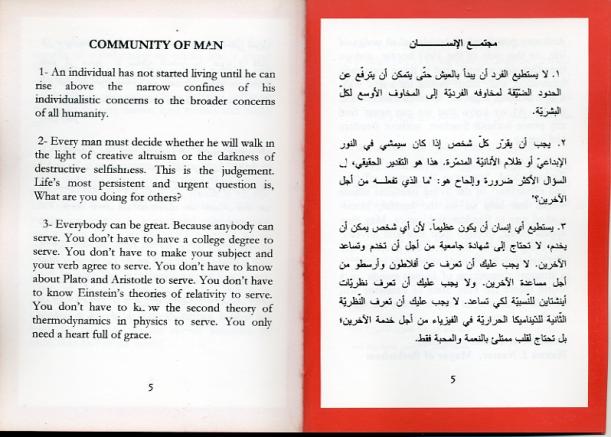 |
 |
If and when we re-edit this Little Red Book, we shall not start with this first passage as a warning : "You have not started living until…" You have no wish to rebuke people from the first line, do you. As if to say, "Look, fellow, your life has been nul and empty, so far, stuck as you've been in your individualistic concerns". This kind of thinking was surely welcome in Baptist churches in the Deep South, and that was some sixty-five years ago, but what of the rest of the world, today, what of us in the twenty-first century ?
Yet, he is making a point, although not too subtly, a point that was made before him by Immanuel Kant, it seems, as far back as 1784, in his manifesto about Aufklärung, Enlightenment. Enlightenment being, in Kant's words, a human being's "emergence from one's self-imposed immaturity".
"Immaturity is the inability to use one’s understanding without guidance from another. This immaturity is self-imposed when its cause lies not in lack of understanding, but in lack of resolve and courage to use it without guidance from another. Sapere Aude! * “Have courage to use your own understanding!”–that is the motto of enlightenment." * “Dare to Know!” (Horace)
For the eighteenth century philosopher, lack of courage, lack of resolve, are the chief causes of our misfortunes. He soon makes it clear : "Laziness and cowardice are the reasons why so great a proportion of men, long after nature has released them from alien guidance nonetheless gladly remain in lifelong immaturity, and why it is so easy for others to establish themselves as their guardians. It is so easy to be immature."
What makes the matter a bit more tricky is Kant's refutation of "alien guidance" : " If I have a book to serve as my understanding, a pastor to serve as my conscience, a physician to determine my diet for me, and so on, I need not exert myself at all." No book, no pastor, no diet-prescriber, therefore. No imam, no rabbi, no holy man.
Hum. Is the point clear enou, but, agh, Think for yourself, use your own understanding, but don't confine yourself in some ivory tower, mute and aloof.
22/4/24. When you read this second passage, binary as its, Light vs Darkness, you may react to a judgemental, preachifying King ("This is the judgement"), but, again, this was the Sixties (sixty years ago), in "black" churches of the South, the deep South, and the man was a pastor, preaching to his congregation, his people.
His question remains, as valid in 2024 as in 1964 : what are we doing, what am I doing, now, for others ?
Third passage : Dr King put service before and above all else. As opposed to self-service, and greed.
We may not agree with his praise of ignorance as a virtue – to make your subject and your verb agree is part of what enables people to understand each other – but "a heart full of grace", with the will to serve others, to help them, support them, is the key to mutual peace in his vision.
Fourth passage : We all have our favorite parts, and this one certainly is candidate. The sort of thought you like to repeat, again and again : All individuals are interdependent. Come what may. Whether we realize or not, we're in debt. We owe rank strangers an awful lot. And may need to draw our own updated list of small concrete debts.
My towel was made in USA. My soap comes from Aleppo, Syria. I drink coffee harvested by Peruvians, tea collected by Indians. My Ovomaltine comes from Switzerland. The oranges were picked by Spaniards. The cane from which my sugar was made was grown by Brazilians. What a delightful way to start a day : with all these people, from the USA, from Syria, from Peru, from India, from Switzerland, Spain, Brazil, actually pouring their labour and smiles into my life…
As for my clothes, my cotton trousers, my t-shirt and shirt were made by Indians, my socks by the Irish, my Idaho jacket by the Chinese…
|
More than one million people were displaced from the North of the Gaza Strip His father is an English teacher in university in Gaza City |
What will they find when they go home ? When will they be able to go home ? |
|
|
|
April 29, 2024. Living in exile.
May 8, 2024. A message from Rafah.
“Displaced in a different place. Still in Rafah.
Sad week and days. One of my sisters passed away, and another lost two of her children. Killed in Rafah, and her third child is seriously wounded.”

Jason Burke, Malak A Tantesh, The Guardian, May 8, 2024
Rafah hospitals in danger of being overwhelmed, say Gaza doctors
Netta Ahituv, Haaretz, May 9, 2024
The Chilling Testimony of a U.S. Neurosurgeon Who Went to Gaza to Save Lives
“The first thing you see in Rafah,” he relates, “is miles and miles of hanging fabrics – the tents of the displaced people, which are erected against the background of the ruins of buildings. When you turn onto Saladin Road, which is the main road connecting Gaza’s north and south, suddenly you see an ocean of people. These are the displaced people who live there now. As you get closer to the hospital, you see more and more people, and more and more tents.”
The water situation there worries me the most, and since returning for the first time, I have talked about water sanitation everywhere and with everyone I can. We lost many patients due to water-related infections.”
“In the process, we discovered that there weren’t enough anesthetics, not enough equipment and not even clean water to wash our hands between operations. Sometimes there were no gloves and sometimes we lacked basic medicines. We were compelled to perform limb amputations without anesthetics and C-sections without sedatives. In order to do as much as we could, we would operate on two patients at the same time in the same operating room.”
“During the night, it was not possible to rescue anyone from the ruins, both because there was no electricity and everything was dark, and also because just being outside was dangerous. So people who were wounded during the night remained where they were until morning. Many of them died from loss of blood or reached us in worse condition because they did not receive immediate treatment. Every morning around 8, a wave of wounded people arrived who had been rescued from the ruins of the night. At that point, around nine out of 10 of them could not be saved.
“From a medical point of view, I remember a boy of maybe 12 or 13 years old, who arrived with bleeding from his eye, from being hit by shrapnel. It was clear that he needed surgery, but there was a two-hour line for the operating room. During the wait, a main artery burst inside his brain and blood began spurting from his eye. I’d never seen anything like that before. He died, of course.
“From a humanitarian point of view, I remember a boy about 2 years old who was seriously hurt by a bomb. He arrived together with many other children who had been in the same house. The moment I saw him I knew we would not be able to save him, so I had to give the only oxygen canister that was available to another wounded child, who had a better chance of surviving. He was alone, with no one by his side as he was dying. I took a picture of him with the phone and went out to see if anyone knew his relatives. I was told that his whole family was buried under the ruins, and that he was the only one who had been pulled out. I decided that this child would not die without someone noticing and crying over him, and I realized that it would have to be me. I held him to me, I cried over him and I named him ‘Jacob.’ I vowed that if I have a son, I will name him ‘Jacob’ in his memory.”
The noise of a one-ton bomb is deafening. The first time one was dropped nearby, I happened to be standing on a stool, and I fell off, because the building shook so hard. It went on like that every five or 10 minutes. I asked the local doctors what to do, and they told me that you get used to it and that I should just keep working to distract myself from the anxiety.”
…/…“That’s how I came to understand that it wasn’t enough to bring food, water and medical equipment to Gaza. It’s also necessary to bring into being authority figures to organize the distribution. That’s another one of my projects now: to bring apolitical organizations into Gaza, groups that won’t deal with cease-fires and agreements, but only with organizing and managing the distribution of humanitarian aid.”
August 19, 2024. We shall not forget. Causes and effects.
to be published
From the end of 2023 to the end of 2024 there have been several calls for a lasting cessation of hostilities, some of them launched from Jerusalem and Nablus. Strangely, only a handful of Nobel laureates supported them. One of these calls was broadcast in May 2024 :
THE JERUSALEM AND NABLUS CALL FOR THE RELEASE OF ALL HOSTAGES
Halas ! Khlass ! Hebrew like Arabic : ENOUGH !
Enough torture for the hostages and their families !
Enough torture for the displaced, Israelis and Palestinians !
Let them all go home now, to heal the wounds.
Eighteen countries* call for the immediate release of all hostages held in Gaza, starting with the women, the wounded, the elderly, the sick.
The fate of the hostages and the civilian population in Gaza has become one.
With the eighteen we whole-heartedly support the ongoing negotiations.
“We’re talking about people, and we all need to act, right now, to end this story.”**
About to be posted
|
|
PEACE LINESMESSAGERIES DE LA PAIX www.peacelines.org |
|
The intro to our last Newsletter in English (May 9, 2024) :
« On the verge of exhaustion, and beyond. »
“At this crucial moment, while a tangible opportunity for the release of the hostages is on the table, it is of the utmost importance that your government manifest its strong support for such an agreement, This is the time to exert your influence on the Israeli government and all other parties concerned to ensure that the agreement comes through which will finally bring all our loved ones home.” the Hostages and Missing Families Forum
https://messageriesdelapaix.org/index.php/category/english/newsletters/
Then there were four letters for French-speaking people, until the end of 2024.
https://messageriesdelapaix.org/index.php/category/francais/lettres-de-liaison/
More downs than ups. No end in sight. Some hopeless roller-coaster.
Until one month ago, January 15, the announcement that a Ceasefire had been signed. With a trickle of releases based on the equation 1 Israeli civilian = 30 Palestinian prisoners / But 1 Israeli soldier = 50 Palestinian prisoners / 1 Thai civilian = 0 prisoner. Then, whom to trust ?
« I won’t talk of hope and despair, » said Jonathan Dekel Chen, from Nir Oz, last month. « I won’t ride that emotional roller-coaster. We’ve all endured too many dispappointments and frustrations. I coudn’t personally stay sane on that path. »
How to confront such levels of pain ? « I have to hold onto optimism because there’s no alternative. » says Jonathan, adding he had to focus on bringing his son back to his wife and kids, waking up every morning and that’s what I do. « Hope is a dangerous thing ».
His son Sagui Dekel Chen was released on February 15, with Iair Horn, from Nir Oz too, and Sasha Troufanov. There are still 73 Israeli hostages in Gaza (out of 255), as of mid-February 2025, half of them presumed to be dead.
The horrendous business of trading human beings as if they were metal chips.
Another sad heavy day, hearing that most likely the Bibas infants from Nir Oz and their mom were killed in Gaza – by an Israeli bomb ? by their captors ? – along with their neighbour Oded Lifshitz. Oded was born in May 1940, making him the oldest hostage detained in Gaza. Four victims among the fifty thousand killed (1,700 of them Israelis, 224 of them humanitarian aid workers – including 179 UNRWA employees / surely not all of them terrorists ?).
1-Take it back to Nir Oz, October 7, 2023.
Such a lovely rural community of four hundred souls until October 6, in the ideal oasis wrestled from the desert by Ran Pauker, the Nir Oz gardener. The man who planted trees.
« On October 7, 2023, 50 members of Kibbutz Nir Oz were killed, and 76 were kidnapped. Twenty remain in captivity, including nine confirmed dead. Forty women and children from the kibbutz were freed in a November 2023 deal, and nine more have been released so far as part of the second agreement. Additionally, the bodies of seven kidnapped residents were recovered in IDF operations in Gaza. » (Haaretz, February 15, 2024).
Let me tell you about Nir Oz. In Nir Oz 207 homes were devastated or burned to the ground, out of 220. What’s left of Oded & Yocheved Lifshitz’s home : 
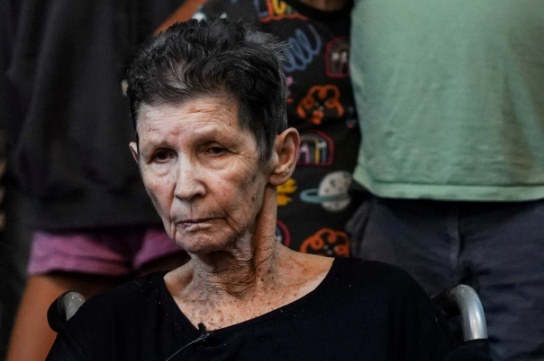
Yocheved, a committed peace activist born in 1938 was also kidnapped from their home in the morning of October 7. When she was confronted to Yahya Sinwar in one of the tunnels, she asked him if he was not ashamed of doing such a thing to people who had struggled for peace all their life. Nir Oz is only about a mile from the border. Yocheved was known for driving sick people from Gaza to adequate hospitals in Israel. Sinwar was stunned, he remained silent. https://messageriesdelapaix.org/index.php/2025/02/19/nir-oz-2017-2024/
Yahyah Sinwar, the failed mastermind of the October 7 rampage (1,200 people massacred in a few hours, most of them civilians, 255 kidnapped), was killed on October 16, 2024. If we had a final equation to offer to shed light at the end of these tunnels of shame and their aftermath, it would be that the man behind so much horror and vain pain was aptly named : Sin War.
2- From a strictly non-partisan point-of-view, is the human tide of January 27, 2024, of tens of thousands of ruined human beings walking back « home » from the refugees’ camps in the South, any less heartbreaking, shameful for humankind ?
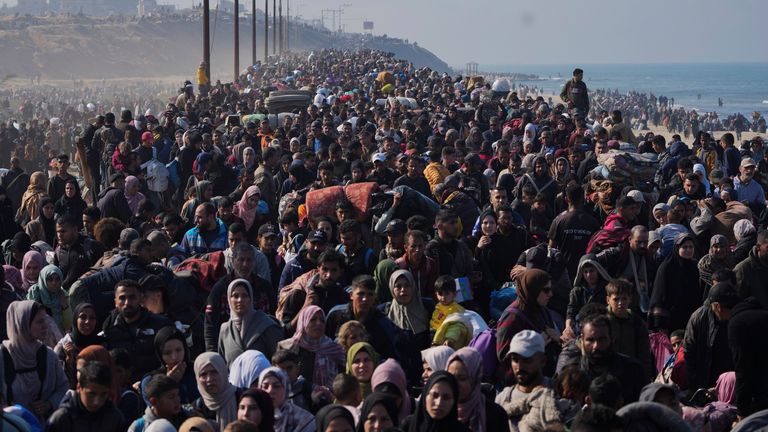
What could they find back « home » ?

70% of buildings and structures in Gaza destroyed, by the most common estimate. Speaking of 2,200,000 people living, surviving there. Raw facts : 80% of them urban, their median age 19.5, most of them decently educated (14 years of school life for girls, slightly less for boys), 40% of them under the age of 15 (close to 900,000). Their average monthly wages, $250 before the war – reduced to nil since. This is Gaza gazing at us. NaGazaKi.
What did the Gazan strategists think ? Did they care at all about human costs ?
Everybody knows there were no shelters for civilians in Gaza. The endless tunnels were only for war.
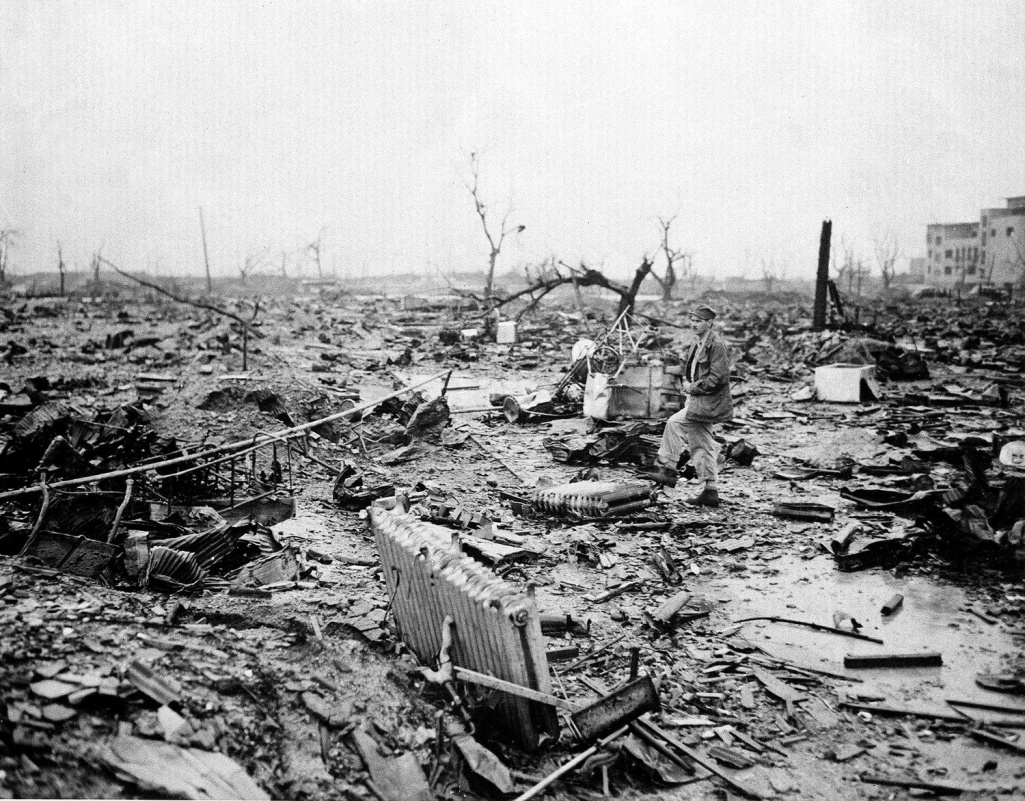
35,000 people were killed in Nagasaki (10% of the population). 50,000 have been killed in Gaza.
There stops the parallel. Nagasaki is 10,000 km from the USA. NaGazaKi is right next to Israel. Next door. The USAF bombers were manned by few men, who did their job from a high altitude. Whereas thousands of young men have been sent to Gaza, to destroy it and trudge through the ruins. How can these men survive and pretend their life is fine ?
How can Gazans survive at all, without water, without electricity, without schools ?
The last message we received from Gaza said : «… our flat is more than partially demolished. Thieves left nothing to us, including all our furniture, doors and clothes, taps… No water in the building. The sewage system is also broken. Life is miserable in Gaza. » That was sent on February 2. No news since. The man who sent the message was a highly respected university teacher, in love with English literature of the early 20th and late 19th centuries. What is left of the university itself ?
3- From Dekel Chen to Einstein and Luther King.
From Jonathan Dekel Chen’s viewpoint (« No amount of military pressure will bring them home ») to Einstein’s formula (« Peace cannot be kept by force ; it can only be achieved by understanding. »).
When do we, in the rich, profit-driven countries, start focusing on the ways to achieve understanding ? Granted that hope is a dangerous thing, but can be replaced by a degree of optimism, we have to remember and repeat that « Violence ends by defeating itself. It creates bitterness in the survivors and brutality in the destroyers. » Martin Luther King
The same reminds us that « The past is prophetic in that it asserts loudly that wars are poor chisels for carving out peaceful tomorrows. »
Not to forget that « The physical casualties of the war in Viet Nam [3 million Vietnamese & 58,281 Americans killed, plus the countless wounded] are not alone the catastrophies. The casualties of principles and values are equally disastrous and injurious. Indeed, they are ultimately more harmful because they are self-perpetrating. If the casualtie of principles are not healed, the physical casualties will continue to mount. »
4- Landmarks on the way out : Palestinian Prime Minister Haniyeh was assassinated in Tehran on July 31, 2024. Hezbollah leader Nasrallah was killed by bombing in Beirut on September 17, 2024. Eventually, as stated above, Sinwar himself met his death in Rafah on October 16, 2024.
What more was needed to stop the war machines ?
5- Day 500 + 3. What’s the point of « a strictly non-partisan point-of-view ?

The writer of this Newsletter was in Nir Oz repeatedly last year. A witness of the horror and devastation that engulfed the lovely community on October 7. The images are vivid in my eyes. The surviving elder, Nathan, took me around – March, April, May, we met again in November. Nothing had changed since October 7, 2023. Nir Oz has become my heart anchor in Israel. I can see the homes of Haim Peri, Alex Dancyg, Amiram Cooper, the Bibas family, Oded & Yocheved Lifshitz in detail. I keep and cherish a golden teaspoon given to me by Rita Lifshitz, Oded’s step-daughter. It was a shared wink between us, to Amos Oz’s theory that we should create an Order of the Teaspoon, and wear it on our lapel : there is a fire endangering us all, and we need to bond our forces to extinguish it. With whatever comes at hand, hoses, buckets… If there are no buckets left, use jars or even glasses. When you cannot even find jars and glasses, seize spoons : the number of committed volunteers will make the difference.
We long kept Oz’s portrait as our gate opener in our Peace Lines site. Recently replaced by Martin Luther King, Ibn Arabi and Spinoza. Plus the video of Tula and Dina singing United, Playing for Change. Does it matter that Tula and Amos Oz are Israelis, Yehudi, and that Dina is Egyptian ?
Do we have to wag our index, label, and reject ?
https://www.youtube.com/watch?v=6vT_7AX06UQ&list=RD6vT_7AX06UQ&start_radio=1

Take a tip from Amos : « … if I were a European [or an American for that matter], I’d be careful not to wag my finger at anyone. Instead of wagging your finger, calling the Israelis this name or the Palestinians that name, I would do anything I could to help both sides (…) if you have an ounce of help or sympathy to offer, now is the time to extend it to the two patients. You no longer have to choose between being pro-Israel or pro-Palestine. » Between Right and Right, How tu cure a fanatic
6- Looking for context, from Gilad Shalit (2006) to Yahya Sinwar (2011-2024) and beyond
My Gaza testimony too.
The rising danger we now face, everywhere, is to let ourselves carried away by violent emotions related to shock, extreme pain, and dismay verging on rage; to share in and spread the « convenient » denial of the Other, that « there are no innocents in Gaza », that they’re all monsters. Six years I have spent in Gaza, off and on. My first time there was during the First Intifada, in the eighties. I have been a witness to the evolution of the Gaza Strip from pre-Hamas days, under the fragile authority of Yasir Arafat, until the days of PM Haniyeh and Yahya Sinwar.
Our job there was to instil the principles of non-violent resistance in schools – with the clearance and hopeful approval of COGAT – Israeli Coordination of Government Activities in the Territories.
In the process I have to say, straight ahead, that we failed. Despite a written agreement of the Palestinian government, then led by PM Haniyeh, our Bilingual Experimental Programme (for ten schools in ten cities, from Jenin to Rafah) was never implemented.
Still, you will often learn more from the failure of an experiment, than from a success.
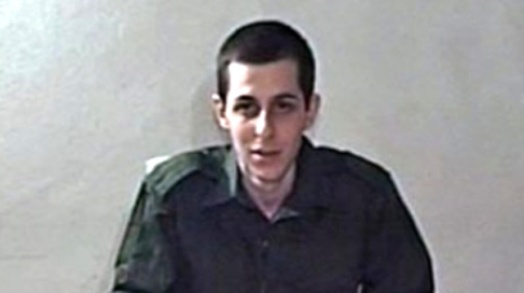
And then, a vital part of it was not a failure, according to our criteria. In the summer of 2011, I was in Gaza, one of the longest stays there, pleading with senior leaders of Hamas for detained captive Sergeant Shalit, a prisoner underground since June 2006 – one year before Hamas seized power.
Sergeant Shalit was eventually released two months later, in October 2011, after more than five years of detention incommunicado in Gaza tunnels, against one thousand Palestinian prisoners (among them Yahya Sinwar) and twenty-seven women.

It should be reminded that the young corporal at the time of his abduction on June 25 was only 19, and he was captured in his 65-ton Merkava tank by a squad of Palestinian fighters composed of three groups, the Qassam Brigades (Hamas), the Army of Islam, and the Popular Resistance Committee (a mixture of secular Fatah, Islamic Jihad, and Hamas).
To make the point clear that this type of strategy, to dig tunnels into Israel and abduct Israelis in exchange for Palestinian prisoners does not originate in « Hamas » alone, nor did it begin with the June 2007 coup, when Hamas + Islamic Jihad seized power from secular Fatah in Gaza.
In Nablus, heart of the West Bank, you could find posters, in May 2007, that read « May we have a new Gilad each year ». In November of the same year 2007 (Nov 11), you find a rare editorial, in Haaretz, titled « An endless pool of prisoners ». It can still be found online.
Since it appears that the fate of prisoners, for both sides, is the burning crux. Some would dismiss the Haaretz editorial, due to its « left wing » reputation. It does not matter to us which side a source of news may be, as long as it provides unprecedented angles and takes. Should it ?
Our Media section daily spans all kinds of media, from Al Arabiya, Al Monitor, Al Jazeera, The Middle East Monitor, Egypt Today, L’Orient Le Jour, The Jordan Times, to Israel National News, The Jerusalem Post, YNet News, The Times of Israel, The Guardian, BBC News, The New York Times, The Washington Post, The Wall Street Journal, Reuters, Le Monde, etc.
7- « Are there innocents in Gaza ? » A close friend, in France, without any connections whatsoever to Israel, upon learning of the Nir Oz infants’ fate in Gaza, sent me an emotional message – « as far as I am concerned, Palestine must be razed ». For him, and for anyone with similar thoughts, I will simply testify that I have only met with innocents in Gaza, during my many stays there. High-school teachers and school heads, lovely pupils – my heart and throat squeeze when I look at their pictures : what have they become ? University teachers, crowds of decent students of both sexes. Opticians, shopkeepers, waiters, nurses, doctors, ordinary kids on the streets, old men, smiling, serious women… I truly loved them all on my way. Did we not speak together, eat, drink, joke, laugh, share good times ? Did they not host me in their homes and flats, did they not open their favorite places to me ?

True, I stood as an outsider. A non-partisan. How Nice to Be an Outsider, writes Nobel laureate Roald Hoffmann, in one of his deepest works, On the Philosophy, Art, and Science of Chemistry.
How nice, indeed, to make yourself an alien, and look at it all from outside, on the outside of whatever side there was/is, as another Nobel poet put it. Or, in Paul Arden’s words, « WHATEVER YOU THINK THINK THE OPPOSITE .» Not just to think outside the box, but eventually escape from whatever box you were in.
Only innocents in Gaza ? What of the senior Hamas leaders I had to meet then ?
We had so many conflicts over the years. Rough, direct, but never final. I guess a measure of mutual respect was present, at the core. How to define the divide between us then ? Was it a case that we, our peace-minded side, did not try hard enough ? Could there be common ground between our Weltanschauung, worldview, and theirs ?
The conflicts between us were not about the ends (freedom and daily quiet), but about the means to get there, and the rationale behind the means. At times, they were about the type of society we envisioned, the type of time control or mind control it implied.
The eternal mistake being procrastination, the weak idea that it can wait.

Take the day they fired an antitank missile at this yellow schoolbus across the border, April 7, 2011, killing Daniel Viflic, 16. It happened to be a Russian Kornet missile, seized by militants from the libyan arsenals bombed open by the French bombers during their anti-Gaddafi military campaign. I was there then. They were so proud and excited with their new toy. I raised my voice, yelled at them. Don’t you have field glasses ? Can’t you make the difference between one lone teenager on a yellow schoolbus and a military target ? They kept smiling, and did not really understand. To them, any Israeli was either a soldier or a soldier to be.
There were no innocent Israelis in their view. Hence the October 7 attack.
How does that compute with the above statement « I have only met innocents in Gaza » ?
In the midst of ideological deafness-blindness you find a sort of ignorance that verges on innocence.
They simply lack the elements of complexity that would take them to another level of awareness.
The mental frames of their experience are what you find in Obedience to authority (Milgram) and Mass psychology of fascism (Wilhelm Reich). No judgment there. The opposite of a judgmental conclusion. The human mind builds the hardest shells depending upon the depth of trauma it experienced. Achilles himself, the mythological prototype of the Angry Man was post-traumatic. You could add Achilles in Vietnam, by Jonathan Shay, to your booklist about war and its consequences. And read a recent article by Ofri Ilany (January 4, 2025), Israelis and Palestinians are Trapped in an Endless Cycle of Trauma, and May Never Heal. Subtitled Only recently have we begun to process the traumas of the previous century, and yet here we are, living from war to war again, from tragedy to tragedy.Trapped.
For a fact, this was years before October 7, 2023, and I never met with Islamic Jihad members, or the most hardened fighters of the Qassam Brigades. My one meeting with Yahya Sinwar in 2012 was brief and without a future. He knew what we were about, with our Bilingual Experimental Programme, based on Martin Luther King’s teachings, but it was clear it was of no interest to him. The man was never alone, escorted by his younger brother, bodyguards, and was hard-pressed for time. He obviously had other plans.
That’s where our ways parted, and I got tired of struggling against walls of inertia year after year. They had the means to print hundreds of copies of our little red book, and the power to let us bring them to high schools, but we were only authorized to go test it at the Islamic University, with students of English, and our stock was too limited to really last beyond a few seasons.
And yet, there were manifest signs that they, the politico-religious nomenklatura at the higher echelon, were open to changes. It was printed in the media : Hamas Shifts From Rockets to Culture War. The New York Times, July 24, 2009. Palestinians try a Less Violent Path to Resistance, ibid., April 6, 2010. Those were the years of our commitment in Gaza – again, with the approval of the Southern Command, headed from 2005 till 2010 by Yoav Gallant. Then, by General Rousso, from 2010 to 2013, and General Turgeman, from 2013 to 2015. All three generals never vetoed our continued attempts in Gaza. 2014-2015 is when we stopped our work there, having run out of that dangerous thing, hope.
To put it simply, it had become manifest that they would not cooperate, despite the original written agreement, first supported by PM Haniyeh. Their faith in the armed struggle was too deeply rooted. Along with the separatism between East and West, hugely bolstered by the birth of ISIS, the Islamic State, in nearby Syria and Iraq in 2013-2014. Isis, spreading tentacles into Palestinian territories and Sinai, leading to the Sinai Insurgency (2011-2023), gathering up to fifteen organizations of jihadis, with some twelve thousand fighters. Among them, the Army of Islam (2005-2025), the Mujahideen Brigades (2006-2025), Ansar al-Quds (2011-2014), Tawhid al-Jihad (2008-2012), Wilayat Sinai (Egyptian branch of ISIS, 2014-2023)…. All of them having ideological and logistical connections in Gaza, which became a hotbed for jihad across borders in those years, 2008-2014.
8- Remember Einstein’s equation : Understanding Over Force.
If it were only Hamas… Where does that obsession with just one side of it come from ? What for ?
Contextualizing our catastrophies, it was clear to whomever spent time in Gaza between 2006 and 2015, that « Hamas » was an umbrella front aiming, in their words, at a « centrist ideology ». Check out with a veteran writer for The Jerusalem Post, Khaled Abu Toameh, April 2015 : https://www.jpost.com/arab-israeli-conflict/hamas-launches-a-campaign-to-combat-extremist-ideology-says-official-396812
And yet, the cadres of the nomenklatura in power in Gaza were busy secretly digging tunnels all the time. The tunnels were their Manhattan Project, so well guarded that I was never allowed into one of them, even to Egypt, despite my repeated requests. The leaders were prodded by hard-core Palestinian Islamic Jihad, with its ten thousand men, following the Lebanese model of Hezbollah, supported and armed by the Islamic Republic of Iran.
Contextualize our catastrophies. If it were only the old blood feud in the Holy Land (cf Jackals and Arabs, Kafka, 1917), we could circumscribe it rather simply, but it englobes the Afghan wars (1979-2021) as well, the Gulf wars (1990-2011), the Syrian wars (2011-2024), the Lebanon wars (1982-2025), the Yemen wars (2014-2025), and up to the war in Ukraine (2022-2025). They all connect.
« The very word ‘war’, therefore, has become misleading. It would probably be accurate to say that by becoming continuous war has ceased to exist. » (1984, Orwell) Has ceased to exist as a real, personal danger in the saturated minds of the post-1984 citizens.
Open the French mainstream media at random, as of, say, February 21, 2025, and what do you find there ? « The executive power wants to prepare the French society to the premices of an unprecedented war effort since 1945 » . No less. By being continuous, the state of war reveals itself as a permanant norm for those societies that belong to the Top Ten of Arms Exporters, i.e. war inciters.

[USA, France, Russia, China, Germany, Italy, United Kingdom, Spain, Israel, South Korea – SIPRI source]
Read the Text of the Address by President Eisenhower, his State of the Union speech in the White House, on January 17, 1961 – about « This conjunction of an immense military establishment and a large arms industry », aptly baptized by him « the military-industrial complex ».
The sense of defeat, from a human point-of-view, is overwhelming.
And yet, we’re still breathing, searching, reaching out.
Through and over the rubble, the ruins of hope.
Like Mosab Abu Toha, the Gaza poet.
« I am neither in nor out. I am in between. » Displaced
For we truly hold that there is no fundamental difference, no existential gap, at heart, between him, Mosab Abu Toha from Gaza, and Jonathan Dekel Chen from Nir Oz, or between Tula in Israel and Dina in Cairo. Only external circumstances separate them. Scientifically speaking, the human matter, the blood groups, are identical. Spiritually speaking, the believers’ God is one and the same.
Not a question of nature, but of degrees. And context.
A case of external circumstances : meaning how each of us relates to them, and chooses to interact.
The constant, daily choices we make, in thoughts, decisions, connections.
« You no longer have to choose between being pro-Israel or pro-Palestine. You have to be pro-peace. » (Amos Oz). Unless, of course, the peace word and concept has become off limits for you, taboo. But then, you would have no interest reading anything related to Peace Lines, would you.
9- The baby elephant in the room.
At that stage in the unfolding of facts and insights, a fast reader could object that there are only pictures of Israelis in these pages, Yocheved Lifshitz, Tula, Amos Oz, Gilad Shalit, Daniel Viflic, with an American President – therefore indicating a clearly pro-Israel bias. What then do you make of the image of the Palestinian January 27 exodus ?
For this is the heart of it all.
You do have two million two hundred thousand people in the 360 square kilometers of the Gaza Strip. Almost a million of them under the age of 15. One million children.
« According to UNICEF, more than 14,500 children have been killed in Gaza since the start of the war: that’s more than the number of children killed in 4 years of wars worldwide. 25,000 children have been injured: Gaza has the highest number of child amputees per capita in the world. »
10- The volcano behind the fence.
https://messageriesdelapaix.org/index.php/category/media/media-2023-2024/
Not that the writings were not on the walls.
“In January 2008, activists broke through the heavy metal fences. Half the population (800,000 at the time) rushed to Egypt, and were driven back after a few days. Check Gaza Border Breach.
What Israelis fear is another Border Breach of such magnitude, this time into Israel. »
https://messageriesdelapaix.org/index.php/2025/02/21/gaza-facts-echoes-2016-2018/
https://messageriesdelapaix.org/index.php/2025/02/21/gaza-gazing-at-us-sending-out-an-s-o-s-2018/
11- A symmetry of illusions.
The French Maginot Line, built from 1930 to 1937 at tremendous cost, just like the Gaza Fence, «created an illusory atmosphere of safety and security », actually blinding people as to the reality of what was going on on the Other Side (Lazar Berman, Times of Israel, October 10, 2023)
Think of it : a $1.1 billion project of 2 million cubic meters of concrete, 140,000 tonnes of iron and steel, having required 1,200 workers erecting and digging – underground and overground, for years.
Likewise, the construction of Gaza’s formidable underground citadel, from 2006 until 2023, made its architects look and feel invincible.
One side never thought the Fence, « a creative, technological project of the first order », could ever be breached in so many ways. The other side never thought the counter-reaction could destroy 70% of its structures.
12- February-March 2025 Crossroads : Dangling Deal. What to do ?
As of February 22, there are still 60 hostages being held in Gaza, less than half of them alive only. We’re nearing the end of the first phase of the agreement. Talks on the next phase must proceed. Whereas secrecy is of the essence for such negotiations, its key necessities should remain in the light, rather than shrouded in darkness. For there are two paths we can go by : fifty thousand human beings have been sacrificed to the bloodthirsty gods of war, and the choice before us is clear. Shall we sacrifice another ten thousand in the weeks to come ?
What to do with Gaza ? with Gazans ? What to do with the West Bank, with Palestinians ?
Force alone fosters chaos. Twenty-five centuries ago it was clear that « Whoever uses force uses weapons for his misfortune. » (Tao 31). In Princess Reema’s words, « communication is the key. If you want progress you can’t not talk to other people. » (Al Arabiya, February 20, 2025)
In 2018, we launched a call to the European Union, with fifteen Nobel laureates, to re-monitor the Rafah Crossing between Gaza and Egypt, and let the people go. It has taken seven years for this call to be heard, until the European Border Assistance Mission was manned again (January 31, 2025).
We cannot wait another seven years to finally face our responsibilities ! We cannot wait seven months or seven weeks to stop the killing machines ! Now is the time to push for the second phase of the Ceasefire. Let the voices of humanity and common sense be heard. Do it now.
The Jerusalem – Nablus Call to end the war
For the sake of humankind
Are we not the same blood groups ?
End all fighting now.
Let them all go home,
All the forsaken survivors,
The hostages, the displaced.
Let the fighters lay down their arms,
let them all recover from the deadly din of war.
The only final victory is to break the endless cycle of retaliations.
We are all in counted time, on a limited stretch of land. Let us make the best of it, both in separation and togetherness.
In support of the European border commitment at the Rafah Crossing with Egypt, we call all parties to consider/remedy the condition of severely suffering civilians.
For a true cessation of hostilities, we call for a permanent end to all attack tunnels
and empowering the lasting reconstruction of Gaza within a peaceful, demilitarized Palestinian state alongside Israel.
20. Hamas believes that no part of the land of Palestine shall be compromised or conceded, irrespective of the causes, the circumstances and the pressures and no matter how long the occupation lasts. Hamas rejects any alternative to the full and complete liberation of Palestine, from the river to the sea.
23. Resistance and jihad for the liberation of Palestine will remain a legitimate right, a duty and an honour for all the sons and daughters of our people and our Ummah.
25. Resisting the occupation with all means and methods is a legitimate right guaranteed by divine laws and by international norms and laws. At the heart of these lies armed resistance, which is regarded as the strategic choice for protecting the principles and the rights of the Palestinian people.
26. Hamas rejects any attempt to undermine the resistance and its arms. It also affirms the right of our people to develop the means and mechanisms of resistance. Managing resistance, in terms of escalation or de-escalation, or in terms of diversifying the means and methods, is an integral part of the process of managing the conflict and should not be at the expense of the principle of resistance.
30. Hamas stresses the necessity of building Palestinian national institutions on sound democratic principles, foremost among them are free and fair elections. Such process should be on the basis of national partnership and in accordance with a clear programme and a clear strategy that adhere to the rights, including the right of resistance, and which fulfil the aspirations of the Palestinian people.